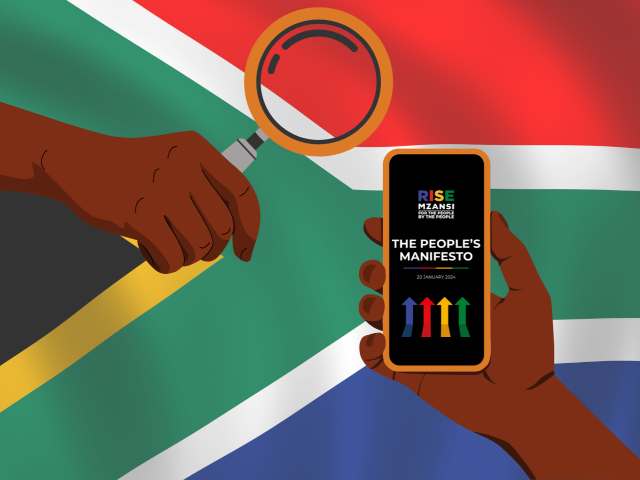-
The periodical was correct that China was by far Kenya’s largest bilateral creditor, owed nearly five times as much as the next nearest creditor, Japan.
-
The $6.4 billion figure for how much was owed to China was, however, outdated, from September 2019, and approximately $300 million less than the most recent data.
-
The Africa Report journalist said “external” was used erroneously instead of “total” debt. Experts have explained these terms were not interchangeable.
Reporting on what it said was a looming deadline for Kenya to repay a major loan from China, pan-African magazine Africa Report made claims about what Kenya owed the Asian country.
“With about $6.4 billion of outstanding loans, China is by far Kenya’s largest bilateral creditor but still accounts for less than 10% of the country’s current $76 billion external debt,” the January 2021 article reads.
Do these numbers stand up to closer scrutiny?
Data on debt owed to China was somewhat of a “moving target”, Eric Olander, who wrote the article, told Africa Check. But the “most common” figure he had seen was $6.4 billion.
Olander also shared a link to a November 2020 Bloomberg news article that cited Kenya treasury data and gave this debt as $6.7 billion. He added that a report from the treasury had put the amount owed to China at “$6.5 billion by June 2021”.
Kwame Owino, chief executive of policy thinktank Institute for Economic Affairs, Kenya, told Africa Check that a quarterly report from the treasury had the country’s most recent debt figures.
Another data source was a public statement made by finance minister Ukur Yattani to parliament, Owino said.
The treasury report, published in September 2020, showed that Kenya owed China $6.7 billion as at that month. Debt was last at $6.4 billion – the amount in the Africa Report – a year earlier, in September 2019.
Newer data available
The minister’s statement, made in December 2020, said that China accounted for 21% of external debt, which he gave as KSh3.66 trillion. Using the exchange rate of KSh110.09 to the US dollar at the time, this works out to $6.98 billion. If the September 2020 exchange rate of KSh108.49 to the dollar is used, the debt is $7.1 billion.
This data is what would have been publicly available when the magazine article was published. Newer quarterly treasury data published in February 2021 shows that as of December 2020, debt to China was at KSh7 billion.
We therefore rate the claim as understated.
Bilateral debt generally refers to debt loaned by one state to another state. Examples would be Kenya borrowing from Uganda or, as in this case, from China.
Treasury data shows Kenya owed China $7 billion as of December 2020, or 66% of bilateral debt.
This is nearly five times what is owed to the next nearest creditor, Japan, or twice what is owed to the next seven countries put together.
In 2018, when we fact-checked a similar claim, China accounted for 72% of Kenya’s bilateral debt.
External debt is the total public and private debt that a country owes foreign creditors. Bilateral debt is just one component of external debt – others are multilateral debt and commercial debt.
Kenya’s KSh3.8 trillion external public debt as of December 2020 comprised:
-
Bilateral debt at KSh1.2 trillion
-
Multilateral debt at KSh1.5 trillion
-
Commercial debt at KSh1.1 trillion
The treasury summed this up in dollar terms as $34.75 billion. China’s $7 billion in loans to Kenya translates to 20% of this. In September 2020 this share was 19.9%.
The claim by the Africa Report is therefore incorrect.
External debt different from total debt
The article had erroneously used the word “external” instead of “total” in reference to Kenya’s debt, Olander told Africa Check.
“I’m glad you brought this to my attention,” he said, adding that he would follow up with the magazine. As of the date of publishing this report however, the article remained unchanged.
Against Kenya’s total public debt of KSh7.3 trillion ($66.1 billion), China’s share was 10.6%. (Note: Central bank data also showed total public debt as $66.3 billion as of November 2020.)
Olander said the source of his $76 billion figure were two reports in Kenyan papers, published in November 2020 and January 2021. Citing an official report, both gave a figure of KSh8.41 trillion.
The report said this constituted KSh7.06 trillion in August 2020, and “committed undisbursed debt of KSh1.35 [trillion]”.
But committed undisbursed debt was not yet available for public spending, Owino of the Institute for Economic Affairs, Kenya told Africa Check. Even though an agreement was in place, the funds had “not been sent to government accounts”, he said.
Kenya has had to pay commitment fees for these loans for the last five years, Phyllis Makau, the director of the parliamentary budget office, told Africa Check. The nonpartisan budget office, which advises legislators on the economy and budget, termed these payments “an extra burden”.
Photo: Kenzaburo FUKUHARA / AFP







Add new comment